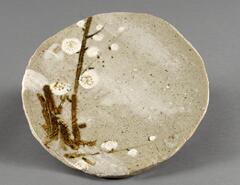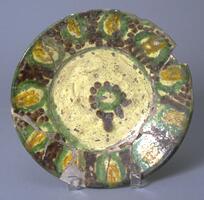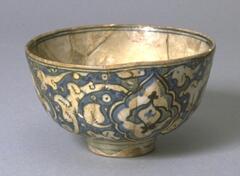87 UMMA Objects
87 UMMA Objects

Korean (Korean (culture or style))
Tea Bowl, 'ido chawan' type
16th century
Bequest of Margaret Watson Parker
1954/1.535
![The mouth is straight. The side is gently curved to the bottom. The foot is hgh and narrow. It was repaired.<br />
<br />
Produced between the 15th and 16th century at a privately owned kiln in the southwestern region of Gyeongsangnam-do, this bowl has been restored following breakage into ten pieces. Its rim curves inwards. It is made with stoneware clay. There are five spur marks on the inner base, and the glaze on the rim of its foot has been wiped away. It is coated with opaque white glaze, on which have formed many crackles and pinholes. The color of glaze is not even throughout the surface. Vessels of this type were popular in Japan as tea bowls (茶碗, Jap. chawan).<br />
[Korean Collection, University of Michigan Museum of Art (2014) p.160] The mouth is straight. The side is gently curved to the bottom. The foot is hgh and narrow. It was repaired.<br />
<br />
Produced between the 15th and 16th century at a privately owned kiln in the southwestern region of Gyeongsangnam-do, this bowl has been restored following breakage into ten pieces. Its rim curves inwards. It is made with stoneware clay. There are five spur marks on the inner base, and the glaze on the rim of its foot has been wiped away. It is coated with opaque white glaze, on which have formed many crackles and pinholes. The color of glaze is not even throughout the surface. Vessels of this type were popular in Japan as tea bowls (茶碗, Jap. chawan).<br />
[Korean Collection, University of Michigan Museum of Art (2014) p.160]](/media/W1siZiIsIjIwMjIvMDUvMjUvM3R0eDR5eWgyY19kZWZhdWx0LmpwZyJdLFsicCIsInRodW1iIiwiMjQweDIwMCJdXQ?sha=d5380f150dce8f41)
Korean (Korean (culture or style))
Deep footed bowl
16th century
Transfer from the College of Architecture and Design
1972/2.75
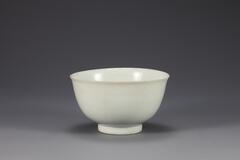
Korean (Korean (culture or style))
Deep Bowl
15th century
Gift of Bruce and Inta Hasenkamp and Museum purchase made possible by Elder and Mrs. Sang-Yong Nam
2004/1.265
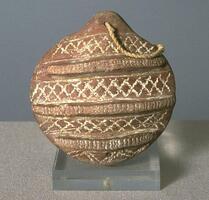
Malian
Ceramic Jewelry Molds (One of eighteen)
1900 – 1932
Gift of Prof. and Mrs. Horace M. Miner
1983/2.215
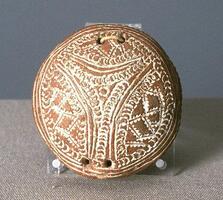
Malian
Ceramic Jewelry Molds (One of eighteen)
1900 – 1932
Gift of Prof. and Mrs. Horace M. Miner
1983/2.221
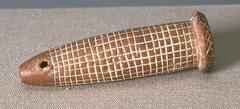
Malian
Ceramic Jewelry Molds (One of eighteen)
1900 – 1932
Gift of Prof. and Mrs. Horace M. Miner
1983/2.226
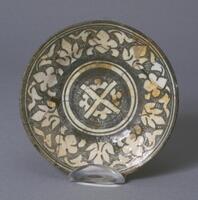
Iranian (Iranian)
Shallow plate with floral rim design on broad rim
1700 – 1899
Museum Purchase
1957/1.88

Iranian (Iranian)
Plate with deep red-brown glaze spashed with yellow (cracked)
1600 – 1899
Museum Purchase
1957/1.98
Loading…
